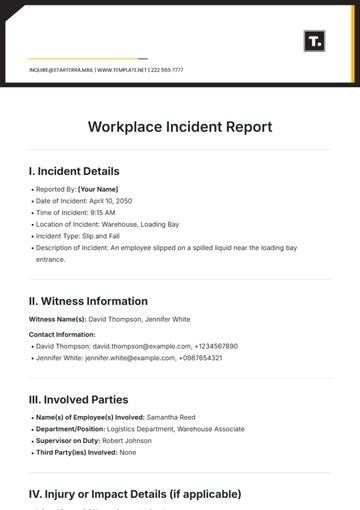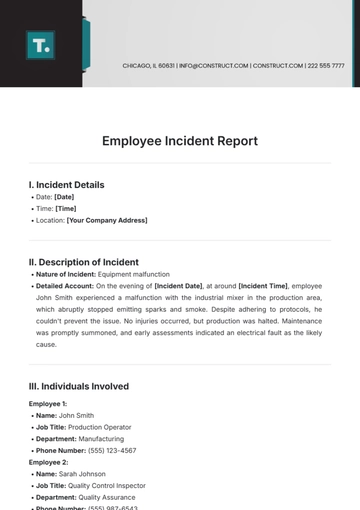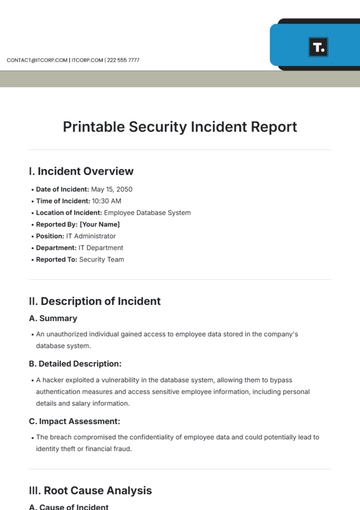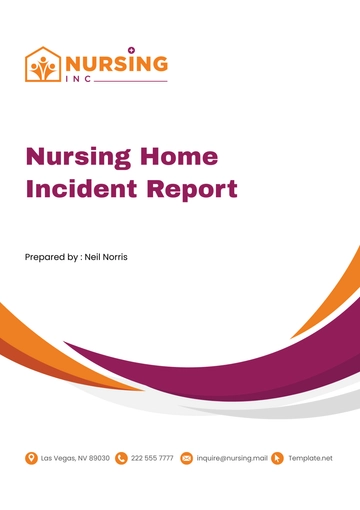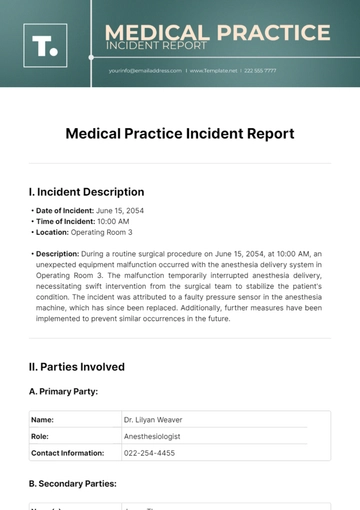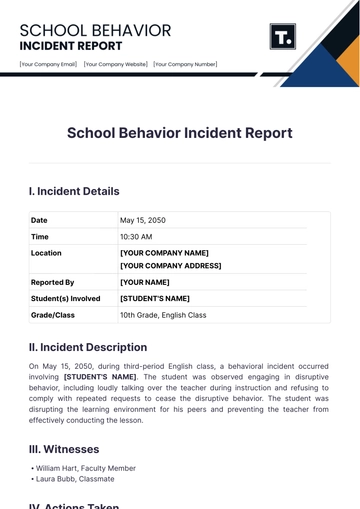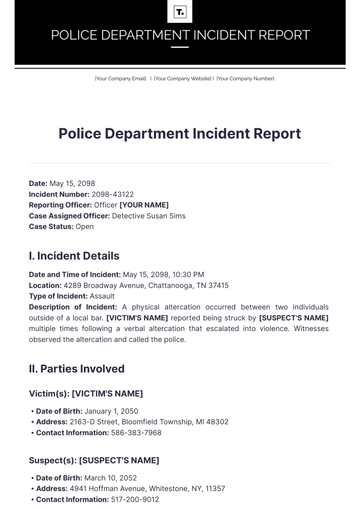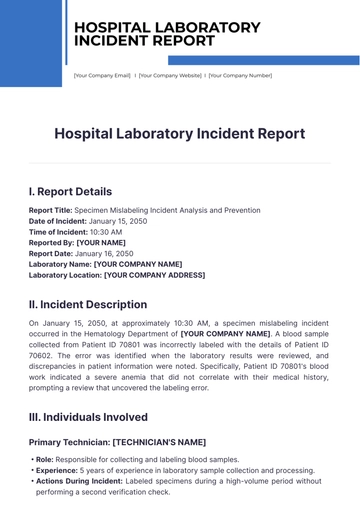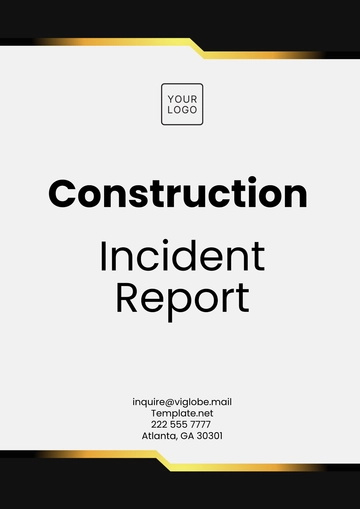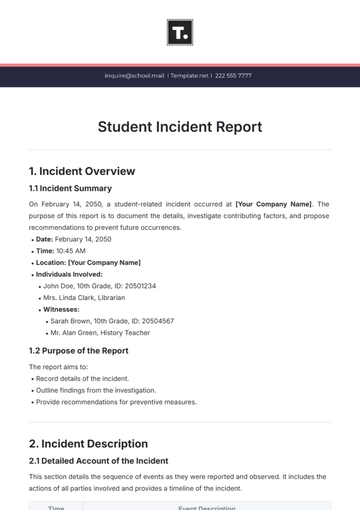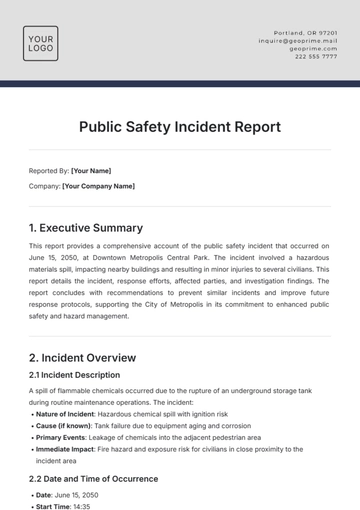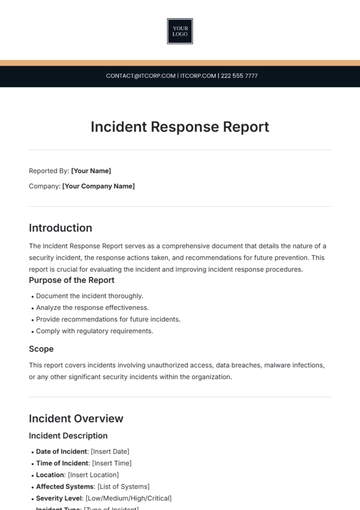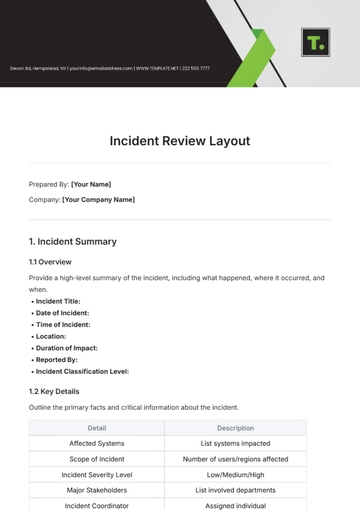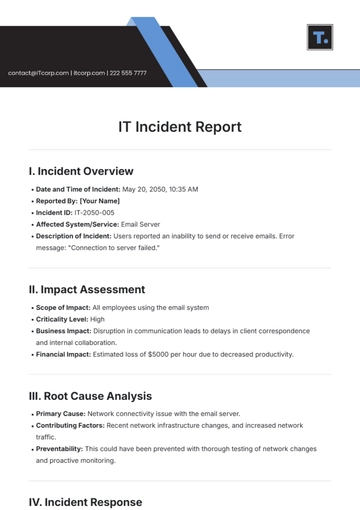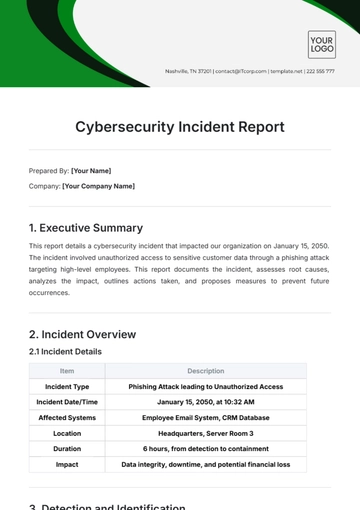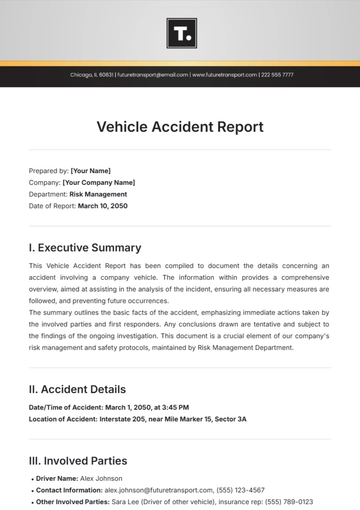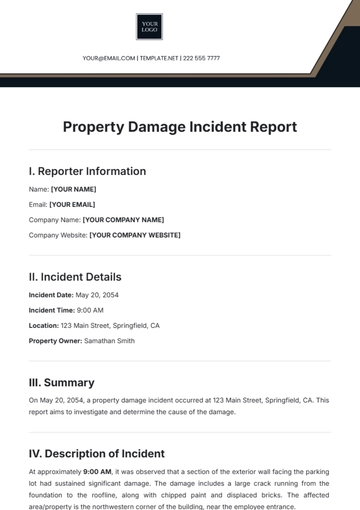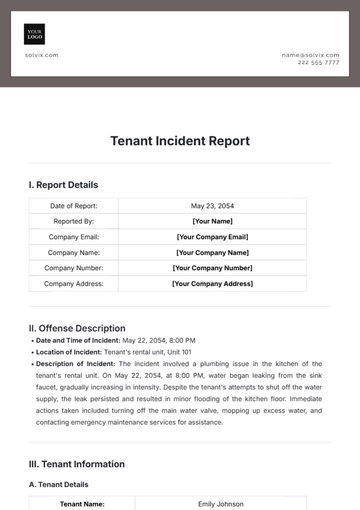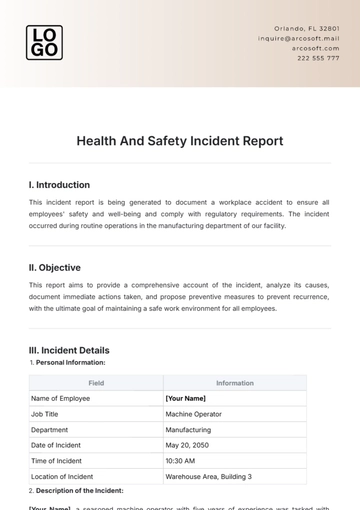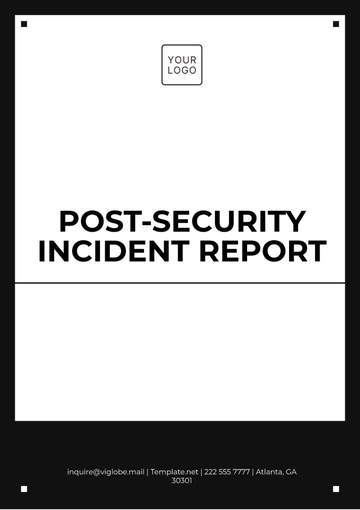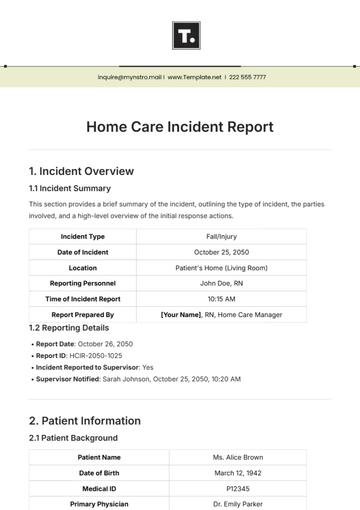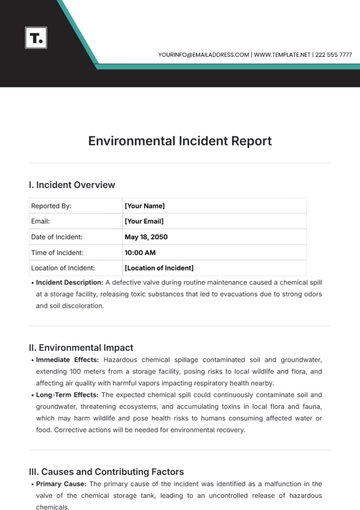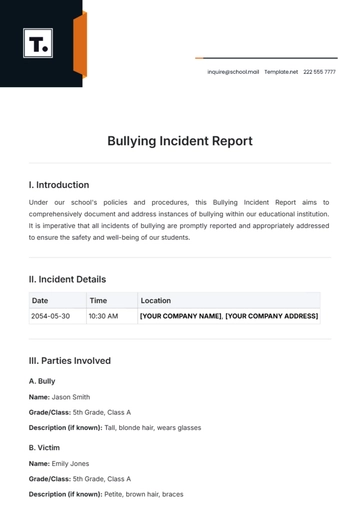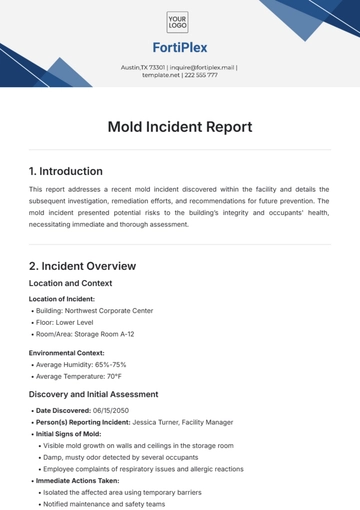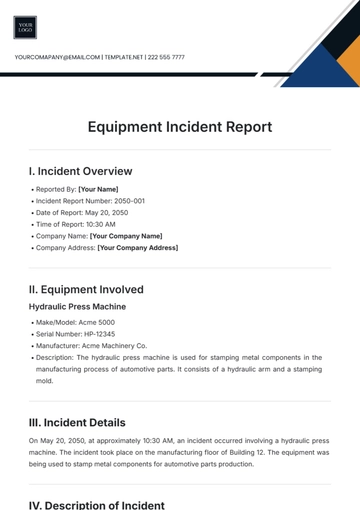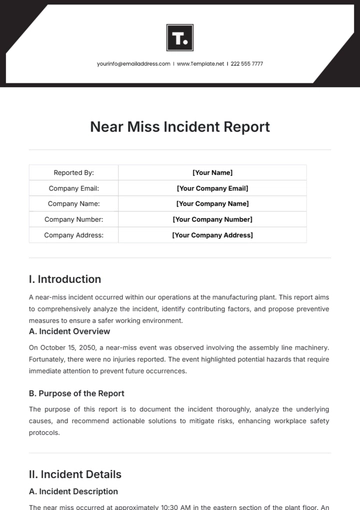Free Safety Incident Investigation Report
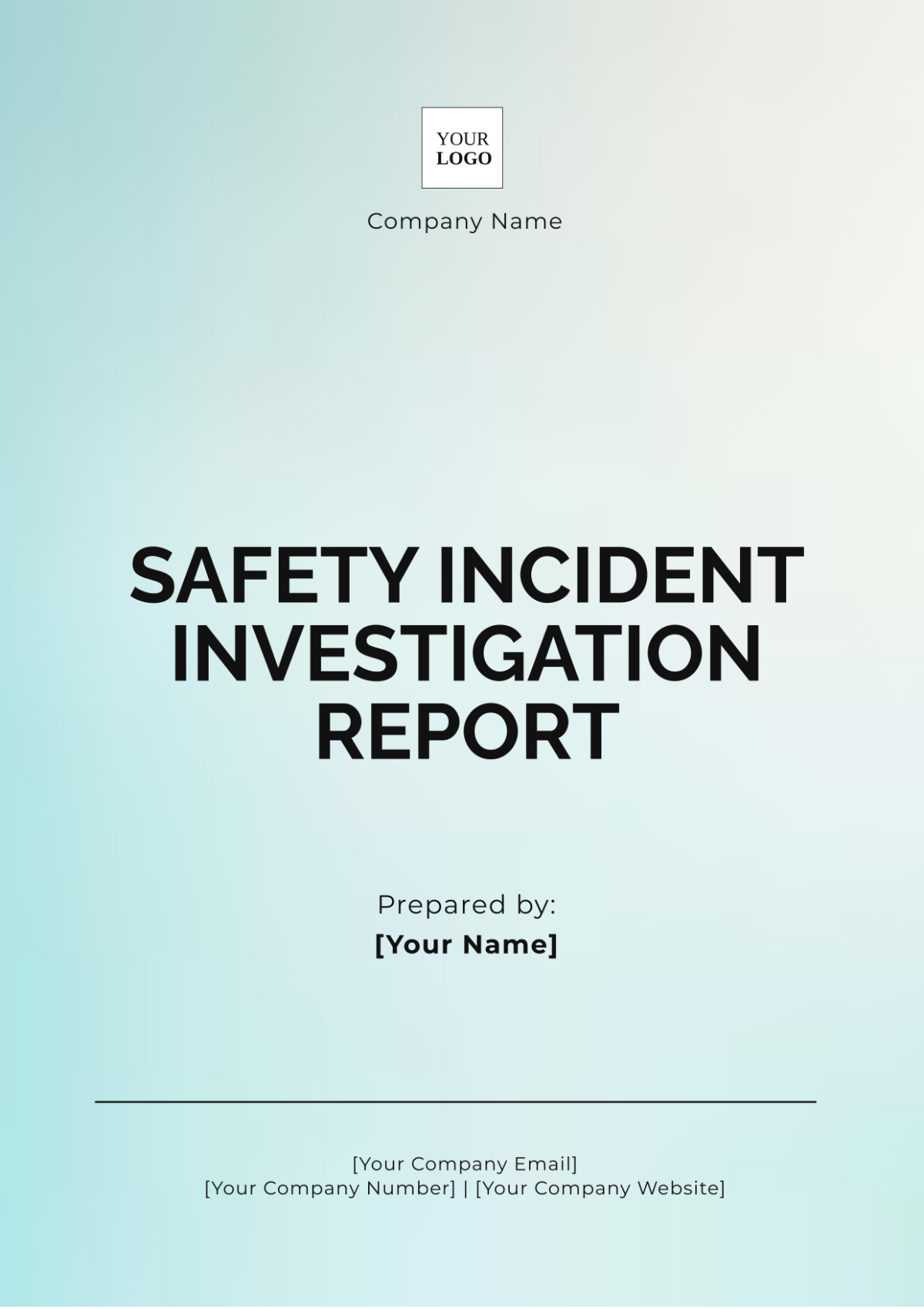
Date of Report: September 27, 2050
Location: Warehouse Facility
Prepared by: [Your Name], [Your Company Name]
1. Introduction
This report documents the investigation of a safety incident that occurred at a warehouse facility. The purpose of this investigation is to analyze the circumstances surrounding the incident, identify the root causes, and recommend measures to prevent recurrence. The findings are based on interviews, witness statements, and evidence collected at the site.
2. Incident Description
On September 20, 2050, at approximately 10:30 AM, a warehouse employee was involved in an incident while operating a forklift. The employee was moving pallets of goods when the forklift tipped over, causing the operator to fall and sustain injuries. Emergency services were notified, and the employee was transported to a nearby hospital for evaluation.
3. Investigation Process
3.1 Evidence Collection
The investigation team collected various forms of evidence, including:
Witness statements from individuals present at the time of the incident.
Photographs of the scene, show the position of the forklift and surrounding area.
Relevant documentation, such as safety protocols, training records, and equipment maintenance logs.
3.2 Interviews
Interviews were conducted with the following individuals:
Daniel Williams, Warehouse Employee
David Lee, Warehouse Supervisor
Emily Brown, Safety Officer
3.3 Timeline of Events
A timeline was created to outline the sequence of events leading up to the incident:
10:15 AM: Employee began operating the forklift to transport pallets.
10:20 AM: Employee attempted to navigate a turn while carrying a heavy load.
10:30 AM: Forklift tipped over, resulting in the employee's fall.
4. Findings
4.1 Root Cause Analysis
The investigation revealed several contributing factors to the incident:
Human Factors: The employee was inexperienced in operating a forklift and had not received adequate training on safe navigation while carrying heavy loads.
Environmental Factors: The floor in the warehouse was uneven in certain areas, contributing to the instability of the forklift during the turn.
Procedural Factors: Existing safety protocols for forklift operation were not adequately enforced, and regular safety checks on equipment were insufficient.
4.2 Contributing Factors
Additional factors that may have influenced the incident include:
Communication Issues: Lack of clear communication among team members regarding safe operating procedures.
Safety Equipment: The employee was not wearing the required safety harness, which could have mitigated injury during the fall.
5. Recommendations
Based on the findings of this investigation, the following recommendations are proposed to mitigate future incidents:
Training: Implement regular training programs for all employees operating forklifts, focusing on safe handling and navigation techniques.
Equipment Maintenance: Establish a more rigorous schedule for equipment inspection and maintenance to ensure safe operating conditions.
Safety Protocol Review: Review and update existing safety protocols for forklift operation, emphasizing the importance of following established guidelines.
Reporting Mechanism: Enhance the reporting mechanism for near misses and unsafe conditions to facilitate proactive safety management and continuous improvement.
6. Conclusion
The investigation into the safety incident has highlighted several critical areas for improvement. By addressing these issues, the warehouse facility can enhance safety measures and reduce the risk of similar incidents in the future. Continuous monitoring and evaluation of safety practices are essential to foster a culture of safety within the organization.
- 100% Customizable, free editor
- Access 1 Million+ Templates, photo’s & graphics
- Download or share as a template
- Click and replace photos, graphics, text, backgrounds
- Resize, crop, AI write & more
- Access advanced editor
Enhance your safety investigations with Template.net's Safety Incident Investigation Report Template. This customizable template can be tailored to fit various safety incident scenarios. Editable in our user-friendly Ai Editor Tool, it ensures thorough and structured documentation, promoting workplace safety and adherence to industry regulations, thereby fostering a safer work environment.
You may also like
- Sales Report
- Daily Report
- Project Report
- Business Report
- Weekly Report
- Incident Report
- Annual Report
- Report Layout
- Report Design
- Progress Report
- Marketing Report
- Company Report
- Monthly Report
- Audit Report
- Status Report
- School Report
- Reports Hr
- Management Report
- Project Status Report
- Handover Report
- Health And Safety Report
- Restaurant Report
- Construction Report
- Research Report
- Evaluation Report
- Investigation Report
- Employee Report
- Advertising Report
- Weekly Status Report
- Project Management Report
- Finance Report
- Service Report
- Technical Report
- Meeting Report
- Quarterly Report
- Inspection Report
- Medical Report
- Test Report
- Summary Report
- Inventory Report
- Valuation Report
- Operations Report
- Payroll Report
- Training Report
- Job Report
- Case Report
- Performance Report
- Board Report
- Internal Audit Report
- Student Report
- Monthly Management Report
- Small Business Report
- Accident Report
- Call Center Report
- Activity Report
- IT and Software Report
- Internship Report
- Visit Report
- Product Report
- Book Report
- Property Report
- Recruitment Report
- University Report
- Event Report
- SEO Report
- Conference Report
- Narrative Report
- Nursing Home Report
- Preschool Report
- Call Report
- Customer Report
- Employee Incident Report
- Accomplishment Report
- Social Media Report
- Work From Home Report
- Security Report
- Damage Report
- Quality Report
- Internal Report
- Nurse Report
- Real Estate Report
- Hotel Report
- Equipment Report
- Credit Report
- Field Report
- Non Profit Report
- Maintenance Report
- News Report
- Survey Report
- Executive Report
- Law Firm Report
- Advertising Agency Report
- Interior Design Report
- Travel Agency Report
- Stock Report
- Salon Report
- Bug Report
- Workplace Report
- Action Report
- Investor Report
- Cleaning Services Report
- Consulting Report
- Freelancer Report
- Site Visit Report
- Trip Report
- Classroom Observation Report
- Vehicle Report
- Final Report
- Software Report
